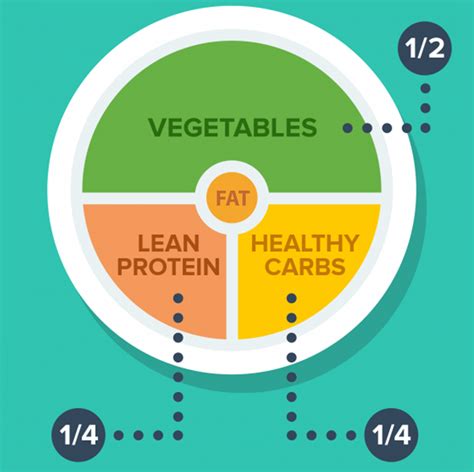What optimal macro ratios fuel male energy, muscle, and recovery for peak performance?

Unlocking Peak Male Performance Through Macro Nutrition
For men striving for peak physical and mental performance, the strategic allocation of macronutrients—carbohydrates, proteins, and fats—is not just important; it’s foundational. The right balance fuels intense workouts, supports robust muscle growth, accelerates recovery, and optimizes hormonal health. But what are the ‘optimal’ macro ratios, and how do they shift based on individual goals and activity levels?
The Foundational Three: Carbohydrates, Proteins, and Fats
Each macronutrient plays a distinct yet interconnected role in male physiology:
- Carbohydrates: The Energy Powerhouse
Primarily responsible for fueling muscle contractions and brain function. Stored as glycogen in muscles and the liver, carbs are critical for high-intensity exercise and sustained energy levels. Choosing complex carbohydrates (whole grains, vegetables, fruits) over refined sugars provides sustained energy and essential fiber.
- Proteins: The Building Blocks of Muscle and Recovery
Essential for muscle repair, growth, and the synthesis of enzymes and hormones. Adequate protein intake is paramount for preventing muscle breakdown, enhancing recovery from training, and supporting lean body mass. Sources include lean meats, poultry, fish, eggs, dairy, and legumes.
- Fats: Hormonal Support and Sustained Energy
Often misunderstood, healthy fats are vital for hormone production (including testosterone), nutrient absorption, cell membrane integrity, and providing a dense source of sustained energy. Incorporate monounsaturated and polyunsaturated fats (avocado, nuts, seeds, olive oil, fatty fish) while limiting saturated and trans fats.

General Optimal Macro Ratios for Active Men
While individual needs vary greatly, a common starting point for active men looking to maintain energy, support muscle, and aid recovery without a specific aggressive goal (like extreme cutting or bulking) often falls within these ranges:
- Carbohydrates: 40-50% of total daily calories
- Proteins: 25-35% of total daily calories
- Fats: 20-30% of total daily calories
This distribution provides ample energy for daily activities and workouts, sufficient protein for repair, and enough healthy fats for hormonal balance. However, these are general guidelines, and adjustments are often necessary based on specific goals.
Tailoring Ratios for Specific Performance Goals
The ‘optimal’ ratio is highly dependent on your objective:
1. Muscle Gain (Hypertrophy)
To build muscle, a caloric surplus is typically required, alongside ample protein. Ratios might shift to:
- Carbohydrates: 45-55% (to fuel workouts and replenish glycogen)
- Proteins: 30-35% (to support muscle protein synthesis)
- Fats: 15-25% (to support hormone production without excessive calories)
Focus on higher protein intake, generally 1.6-2.2 grams per kilogram of body weight, combined with sufficient carbohydrates to drive training intensity and recovery.

2. Fat Loss (Cutting)
During a caloric deficit, preserving lean muscle mass is crucial. Higher protein intake helps with satiety and minimizes muscle loss, while carbohydrate intake might be adjusted based on activity level.
- Carbohydrates: 30-40% (adjusted based on training intensity)
- Proteins: 35-45% (to preserve muscle mass and increase satiety)
- Fats: 20-30% (for hormonal health and essential functions)
Protein intake can be bumped up to 2.2-2.8 grams per kilogram of body weight in a deficit.
3. Endurance Performance
Endurance athletes require significantly more carbohydrates to sustain prolonged activity.
- Carbohydrates: 55-65% (to maximize glycogen stores)
- Proteins: 15-25% (for repair and recovery)
- Fats: 20-30% (for sustained energy and overall health)
Pre- and post-workout carbohydrate timing becomes especially critical here.

Beyond Ratios: Key Considerations for Optimal Fueling
While ratios provide a framework, other factors significantly impact their effectiveness:
- Individual Variability: Metabolism, activity level, genetics, and even gut microbiome influence how a body utilizes macros. What works for one person might not work for another.
- Training Intensity & Volume: Higher intensity and volume workouts demand more carbohydrates for fuel and protein for repair.
- Timing of Macronutrients: Consuming protein and carbohydrates around workouts (pre- and post-training) can optimize recovery and muscle protein synthesis.
- Micronutrients & Hydration: No amount of perfect macro tracking can compensate for deficiencies in vitamins, minerals, or chronic dehydration.
- Sleep & Stress Management: These non-nutrition factors profoundly impact hormone balance and recovery, directly affecting how your body responds to your macro intake.

Practical Steps to Determine Your Optimal Ratios
- Calculate Your Total Daily Energy Expenditure (TDEE): Use an online calculator to estimate the calories you need to maintain your current weight.
- Set a Goal: Determine if you aim for maintenance, gain, or loss, and adjust calories accordingly.
- Choose a Starting Ratio: Begin with one of the general or goal-specific ratios mentioned above.
- Track Your Intake: Use a food tracking app for a few weeks to monitor your actual macro intake.
- Monitor & Adjust: Pay attention to your energy levels, workout performance, recovery, body composition changes, and overall well-being. If you’re not seeing progress or feel suboptimal, adjust your macros by 5-10% and re-evaluate.

Conclusion: The Art of Personalized Macro Nutrition
There isn’t a single, universal “optimal” macro ratio for all men. Instead, it’s a dynamic process of understanding your body, defining your performance goals, experimenting with different ratios, and consistently monitoring the results. By intelligently manipulating your intake of carbohydrates, proteins, and fats, you can unlock enhanced energy, robust muscle growth, and superior recovery, propelling you towards peak performance in all aspects of your life. Listen to your body, stay consistent, and don’t be afraid to adjust your approach as your goals and needs evolve.







